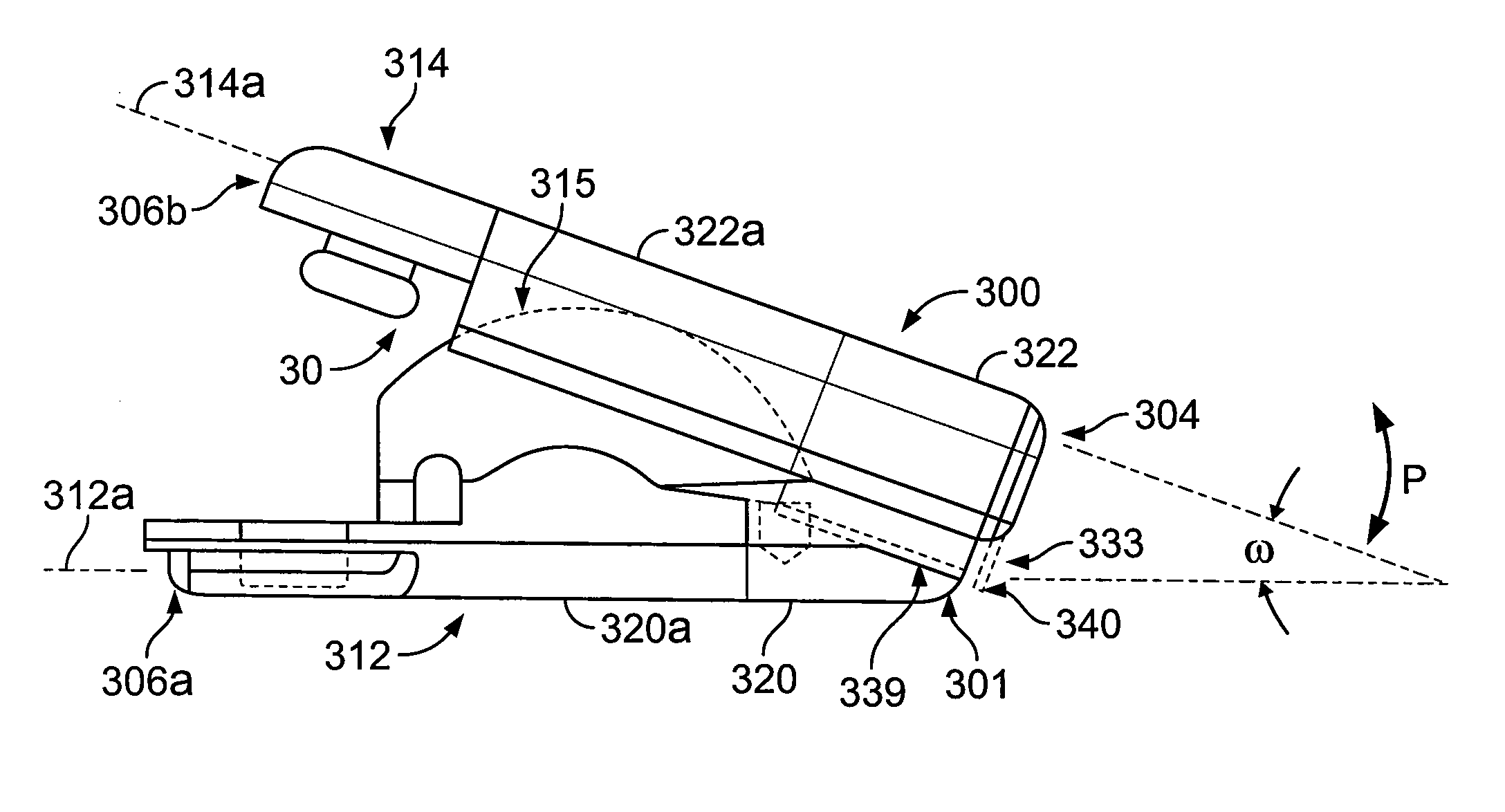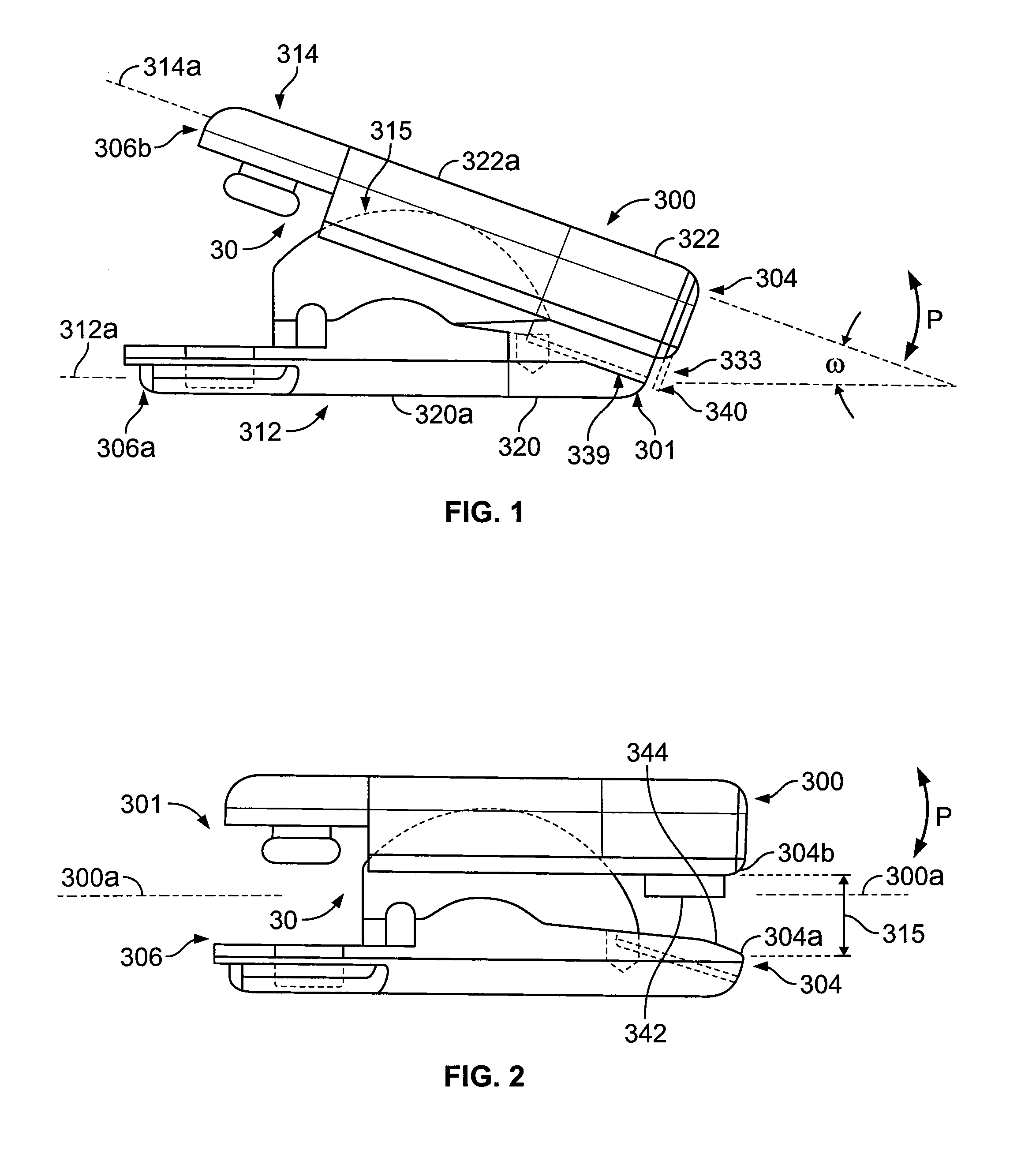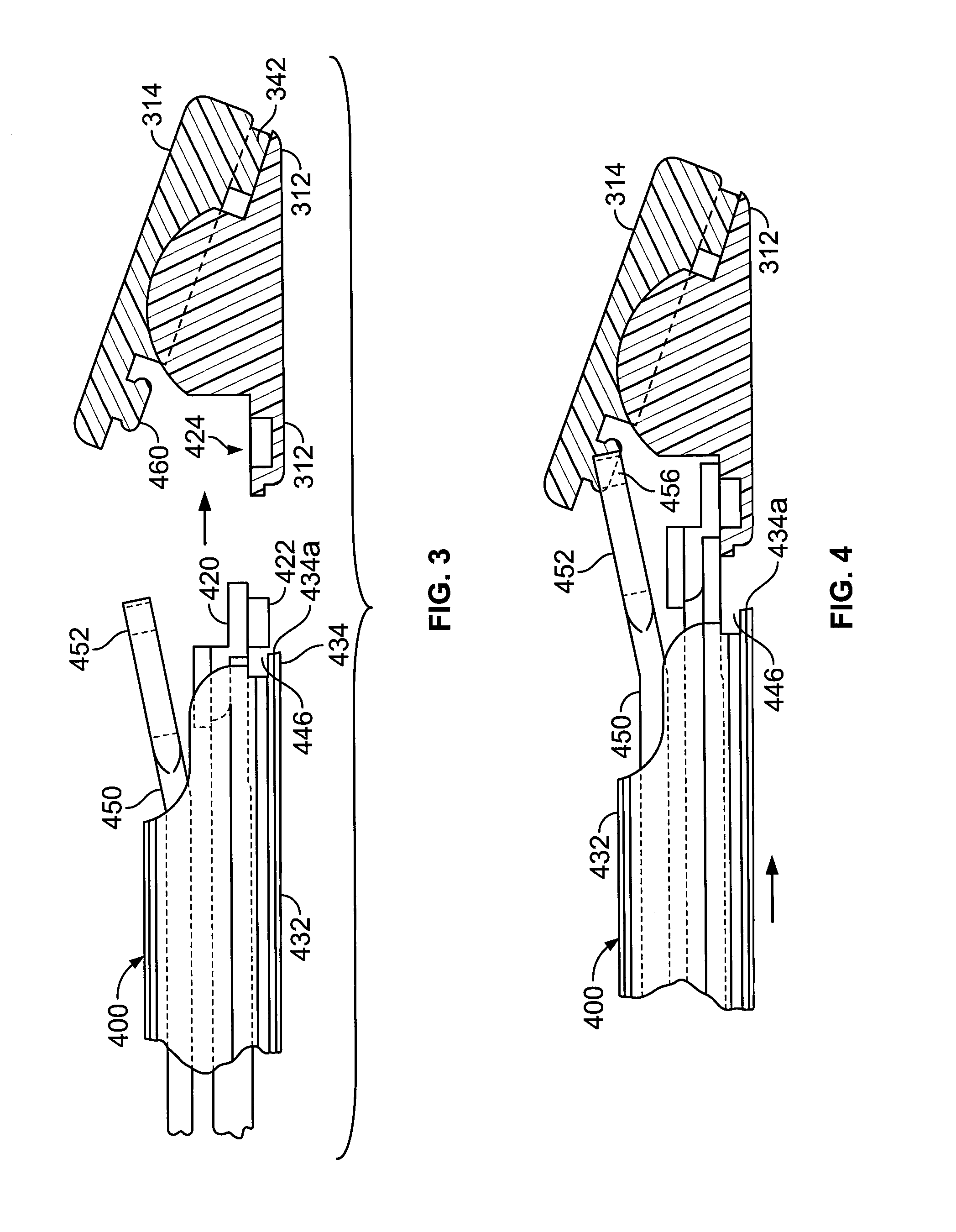[0052] The present invention overcomes several drawbacks of the prior art by providing orthopedic weight bearing
arthroplasty devices having opposed bearing or articulation surfaces both formed of the same polymeric material, and preferably of a PEEK material so that one PEEK material surface bears against another PEEK material surface (PEEK on PEEK material articulation surfaces). It has been found that articulating members having bodies including bearing surfaces thereof formed of the same polymeric material can provide optimized
wear resistance comparable to that of metallic bearing couples even when subjected to extreme test conditions such as including
coupled motion and load profiles that have mismatched or shifted frequencies. Similarly, the polymeric articulating members also avoid
strength loss due to strain hardening even when subjected to these harsh testing conditions unlike UHMWPE, as previously discussed. Unexpectedly, it has been found that the wear rate of the
implant herein having articulating members of the same polymeric material is not only better than that in conventional UHMWPE and
metal bearing couples commonly used in intervertebral
artificial disc and
nucleus applications, but that the wear rate is an
order of magnitude lower than these conventional bearing couples. This is true even where one of the bearing surfaces includes a thin arcuate wall portion on which it is formed. Even with a
thin wall bearing portion, the polymeric articulating members still provide the optimized strength and
wear resistance, as discussed above.
[0053] The PEEK material articulating members can be provided with relatively small features for being engaged by metallic components of an
insertion tool for advancing the
implant into the
intervertebral spaces. These small features generally have relatively narrow dimensions so that during
insertion they experience high concentrated forces thereon as applied by the
metal engaging portions of the
insertion tool. The features can include a post for being engaged by a metallic arm of the tool and / or arcuate surface portions for being engaged by a metallic tip of the tool with the post and arcuate surface portions being of the same polymeric material as the bodies of the polymeric articulating members. The increased strength of the polymeric bodies allows for the narrow and small features to have a secure, generally
mating fit with the metallic insertion tool components that cooperate therewith during insertion and apply high loads thereto.
[0055] In one form of the invention, weight bearing total
joint arthroplasty devices are provided in which both the opposed articulation surfaces and major load and
stress bearing structural components are comprised substantially of PEEK and / or CFR PEEK. Devices provided in accordance with this aspect of the invention do not utilize
metallic materials as primary structural or articulation components. For example, weight bearing total
joint arthroplasty devices are provided comprising PEEK and / or CFR PEEK, and in which the only metal components are radiopaque markers used for detecting the position of the device via imaging techniques. The metallic markers in such embodiments are preferably displaced from the primary articulation and wear surfaces so as to avoid the generation of potentially harmful metallic wear particulate. The artificial joint implants in accordance with this aspect of the invention have fewer components because both structural and articulation requirements are met by use of the same material; whereas previous known designs utilized a plurality of materials to satisfy these constraints. As a consequence of having fewer components and / or avoiding
layers of different materials, these devices offer the potential for fewer
modes of failure, reduced inventory, and simplified lower cost manufacturing and
assembly.
[0056] Due to the use of PEEK material, devices disclosed in accordance with this aspect of the invention are strong and durable, with high-
impact strength and excellent flexural and tensile properties. The devices are substantially radiolucent so as to not interfere with imaging of the joint area. Because the implants disclosed herein have a modulus of elasticity closer to the
bone tissue they are implanted in, they are less prone to damage the adjacent bone by
stress shielding effects compared to more rigid materials. The disclosed devices are also highly biocompatible and biostable. They can be repeatedly steam and gamma sterilized with no detrimental effects on bulk material properties, and
resist attack by a wide range of organic and inorganic chemicals and solvents.
[0058] The joint implants disclosed herein have low coefficients of friction at the interface between opposed articulation surfaces of PEEK material, and can be designed to permit a full range of complex multidirectional motion in weight bearing joint applications. As disclosed further herein, embodiments of the present invention have been shown to have surprisingly favorable wear characteristics when evaluated by rigorous simulator
testing protocols. The joint implants made in accordance with the invention offer the potential for low wear rates similar to metal on metal devices, while overcoming the known problems associated with the use of metallic structural and articulation components. These devices may also exhibit minimal strain hardening and cross shearing when subjected to complex multidirectional motion under physiological loadings, a phenomenon that has proved detrimental to other polymeric materials such as UHMWPE. These wear test results disclosed herein demonstrate that PEEK on PEEK articulation is a viable alternative for articulating orthopedic weight bearing
arthroplasty devices, and that, in accordance with the principals of the present invention, clinically feasible
arthroplasty devices comprising substantially all polymeric material can be provided.
[0060] In another aspect of the invention, improved
total disc replacement devices are disclosed, which comprise upper and lower shells of PEEK material which form an internal convex-concave articulation interface. The
artificial disc device may comprise one or more restraint structures located on one or both of the shell members to help keep the shells from becoming dislodged or migrating across the boney endplate of the vertebrae with the annulus removed. The restraining portions may provide, for example, in the form of directional teeth on the endplate facing surface of one or both of the opposed shells. Such an artificial disc offers benefits as a
lumbar disc replacement, and is particularly well-suited as
cervical disc replacement because it can be sized to fit the small space that the
cervical disc occupies while still providing the necessary strength and
wear resistance desired despite decreased contact area in such smaller artificial disc devices.
 Login to View More
Login to View More 


